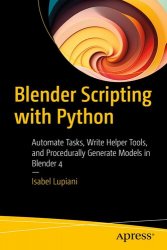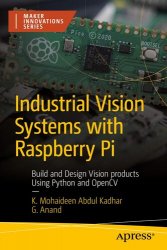 Название: Using MATLAB to Solve Statistical Problems: A Practical Guide to the Book “Statistics for Chemical and Process Engineers”
Название: Using MATLAB to Solve Statistical Problems: A Practical Guide to the Book “Statistics for Chemical and Process Engineers”Автор: Yuri A. W. Shardt
Издательство: Springer
Год: 2023
Язык: английский
Формат: pdf (true), epub, mobi
Размер: 10.2 MB
This companion book to the textbook Statistics for Chemical and Process Engineers−A Modern Approach provides a complete overview of how to use Matlab to solve typical statistical problems in engineering. In addition to short sections on the required theory, the focus of the book is on detailed, line-by-line MATLAB code for solving the specific problems. Furthermore, solutions are provided for standard problems that can then be re-used and modified as necessary. End-of-chapter questions allow the reader to independently test the knowledge acquired.
As the usage of computers to solve complex problems becomes more commonplace, there is a need to understand how to use software to solve both basic and more complicated engineering problems, especially in statistics. One of the most common academic software for handling data is MATLAB, a programme originally developed to handle matrix manipulations and since expanded to include more complex capabilities. In the academic world, MATLAB is often the default engineering standard for data processing and manipulation. Thus, there is a need to understand how to implement the various statistical concepts easily and effortlessly in MATLAB.
In MATLAB, there are 2 different types of arrays that can be created: matrices (and vectors) and cell arrays. In general, matrices are arrays of numbers or functions that are created using [ ] notation. A vector is simply a matrix that consists of a single row or column. The matrix is declared by entering each row with the elements of the rows being separated by spaces or commas. Each row is separated by a semicolon;. The elements of a matrix are accessed using the (row, column) notation. If it is desired to access all the elements of a given row or column, then a colon: can be used instead of a value. Finally, a not necessarily consecutive submatrix can be extracted by providing a vector of desired rows or columns, for example, would take the first, third, fourth, fifth, and eighth rows (or columns).
Скачать Using MATLAB to Solve Statistical Problems
[related-news] [/related-news]
Комментарии 0
Комментариев пока нет. Стань первым!















